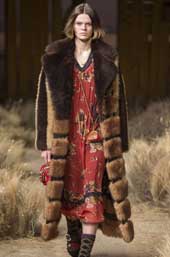"Dominated by three giants, all European — LVMH Moët Hennessy Louis Vuitton, Kering and Richemont, the global luxury market is up for a major upheaval with the American brands proving their mettle. Coach and Michael Kors are planning to shift their global positioning and this in a way is touted as the major reshuffle for luxury industry. Kors plans to buy the upmarket London-based shoemaker Jimmy Choo for $1.2 billion. It declared the deal to be the beginning of a makeover that would turn an ailing American single-brand accessories business into a multilabel global fashion and luxury behemoth."

Dominated by three giants, all European — LVMH Moët Hennessy Louis Vuitton, Kering and Richemont, the global luxury market is up for a major upheaval with the American brands proving their mettle. Coach and Michael Kors are planning to shift their global positioning and this in a way is touted as the major reshuffle for luxury industry. Kors plans to buy the upmarket London-based shoemaker Jimmy Choo for $1.2 billion. It declared the deal to be the beginning of a makeover that would turn an ailing American single-brand accessories business into a multilabel global fashion and luxury behemoth.
The deal happened two months after Coach’s $2.4 billion acquisition of Kate Spade. Coach, Kors’ biggest competitor, has also publicly promoted its ambitions to build itself into a new American multibrand accessible luxury organization, as per CEO Victor Luis. There seems to be a major consolidation happening with so many brands merging together or joining hands.

While discussion in the fashion world has centered on the need to support new designers, rather than revive older names, Idol said Kors was not interested in emerging faces but rather those with “some longevity” that “may need to have a structure to accelerate their growth.”
John Idol, Chairman and Chief Executive, Michael Kors Holdings, said in an interview Kors was considering only ‘one or two more acquisitions’ for now, and had no plans to reach the size of LVMH, which has more than 50 brands in its portfolio. But he added he had great admiration for the French group’s long-term approach to brand building. First, we are really going to look at luxury companies. Second, we are going to look at companies that lead in style and trend. The third requirement was for companies with ‘some size and scale’ and ‘some heritage’, he added.
Game of acquisitions
There are many possibilities for acquisitions. Analysts have pointed to accessories brands like Furla in Italy and Longchamp in France; both are family-owned businesses with strong growth records and established consumer appeal across continents and generations. Burberry, Britain’s largest luxury brand by sales was being considered a Coach takeover target before the Kate Spade deal struck. Mulberry, another British heritage brand, has also been mentioned by bankers in the sector, as have Hunter and Barbour.
Experts say, the timing of potential expansion is significant. The luxury landscape is in a flux — mall and department store traffic has fallen, consumer shopping habits are changing, and online retailers, notably Amazon, appear to be major threats. Other brands, like Ralph Lauren and Marc Jacobs, have opted to cut costs, close stores and fold multiple lines into a single offering.
At the same time, Coach and Michael Kors, are going in a more expansive direction. With acquisitions, they can gain new revenue streams, achieve distribution efficiencies and diversify their offering. There are also financial reporting benefits. LVMH, for example, does not break out the performances of its smaller luxury brands, allowing any faltering names to benefit from better performance by their siblings.












